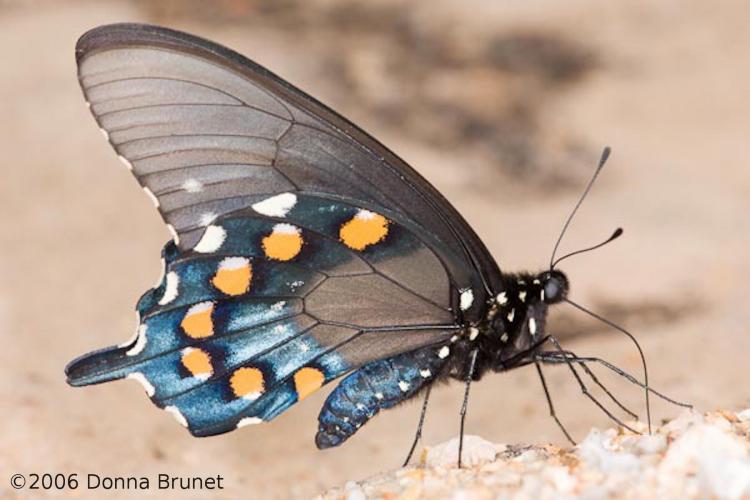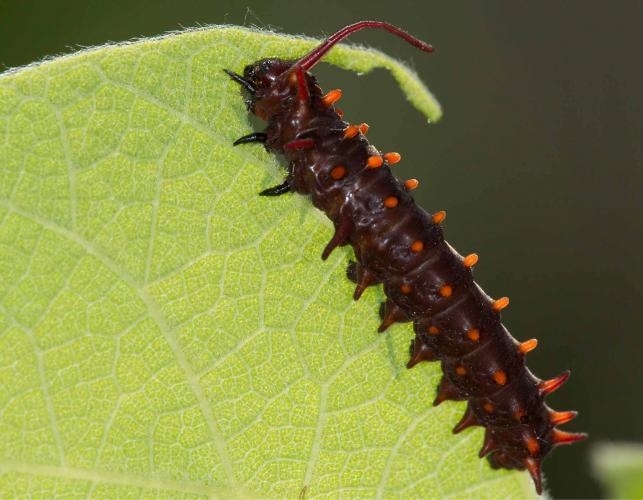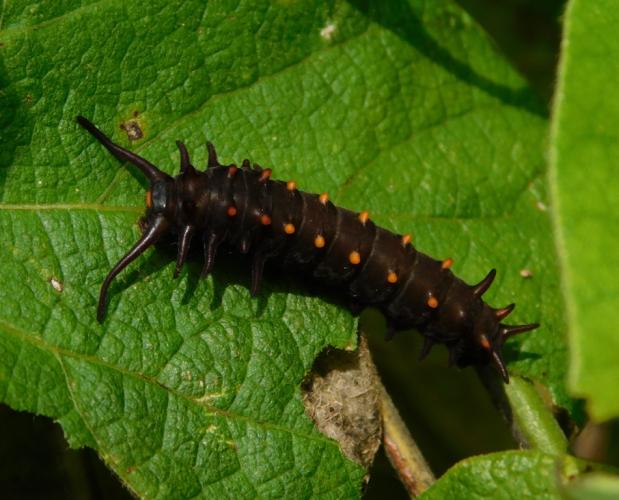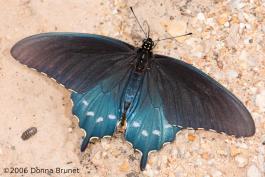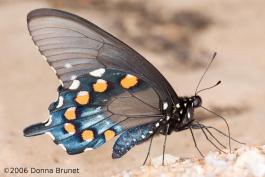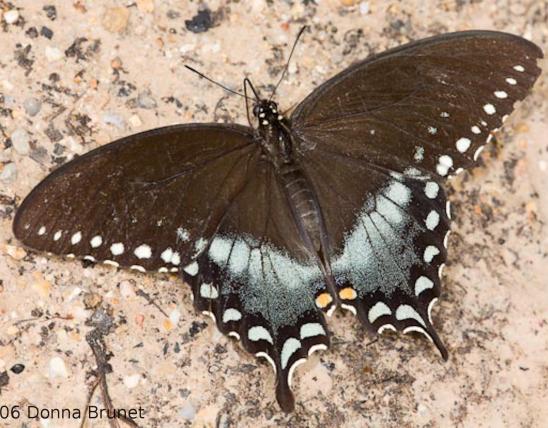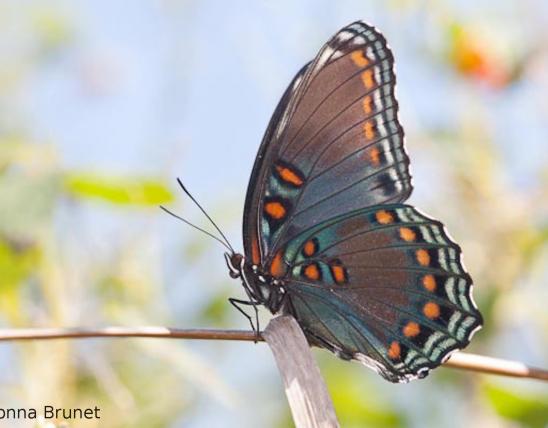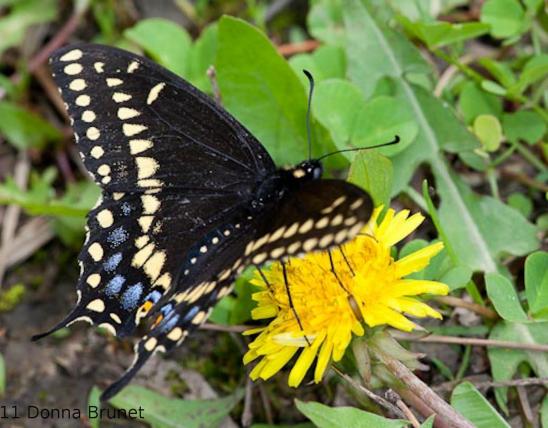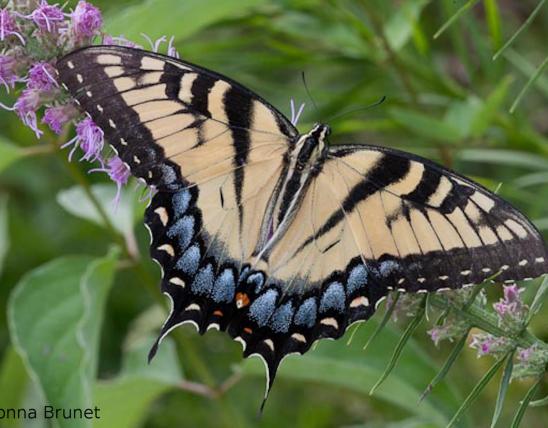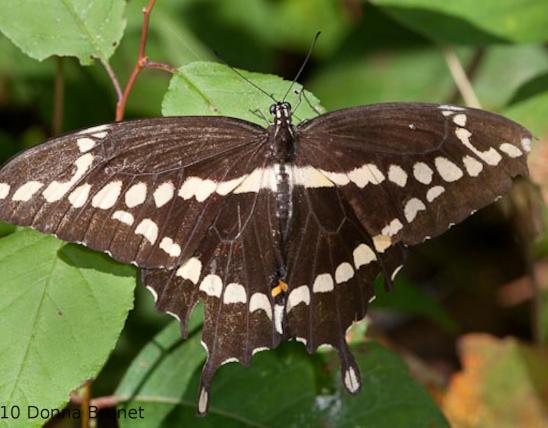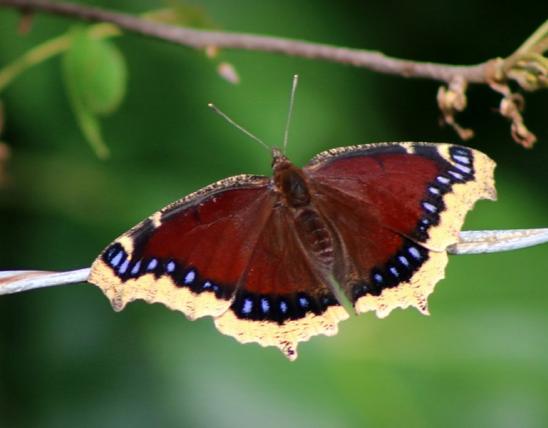
From below, adult pipevine swallowtails have a single row of round red-orange spots on an iridescent blue hindwing patch. From above (the dorsal view), the forewings are solid black or may have a short row of small, cream-colored spots that does not extend to the wingtip. Males have a brighter blue iridescent patch on the dorsal hindwing than females.
Larvae are dark reddish purple with fleshy tubercles, with those of the head and last abdominal segments longer.
Similar species: Among the many butterflies that mimic the pipevine swallowtail are red-spotted purples, dark female eastern tiger swallowtails, female black, Ozark, and spicebush swallowtails, and female Diana fritillaries.
Wingspan: 2¾–4 inches. Spring specimens are smaller than those of later generations.

Statewide, but most common in the Ozarks.
Habitat and Conservation
Look for pipevine swallowtails in open areas and wooded edges. The shimmering blue-green color and bright orange spots are a warning to predators that this species contains acrid body juices. Other butterflies have developed colors that mimic pipevine swallowtails and gain protection by association. These include red-spotted purples, dark female eastern tiger swallowtails, female black, Ozark, and spicebush swallowtails, and female Diana fritillaries.
Food
Larvae feed on Virginia snakeroot, Dutchman’s pipe, and other members of genus Aristolochia (pipevines). The adults visit a wide variety of flowers and sometimes gather in numbers at moist places.
Status
Breeding resident.
Life Cycle
Adults fly from late April into October. There are several broods in Missouri. Females lay small groups of red eggs, placing more eggs on larger plants. Distasteful chemicals eaten by caterpillars are retained in other life stages. Birds and many other predators learn not to eat this species.
Human Connections
One of the major subfields of biology studies the diversity of life on earth, and the reasons why such diversity exists. Unraveling the relationships between the toxic pipevine swallowtail, its several lookalike mimics, and their predators is one example of this subdivision of biology.
Ecosystem Connections
Although many predators avoid this species, the caterpillars are preyed upon by lady beetle (ladybug) larvae. The caterpillars can defend themselves by biting the larval lady beetles; this strategy is most successful when the caterpillar is larger than the attacking beetle larva!

